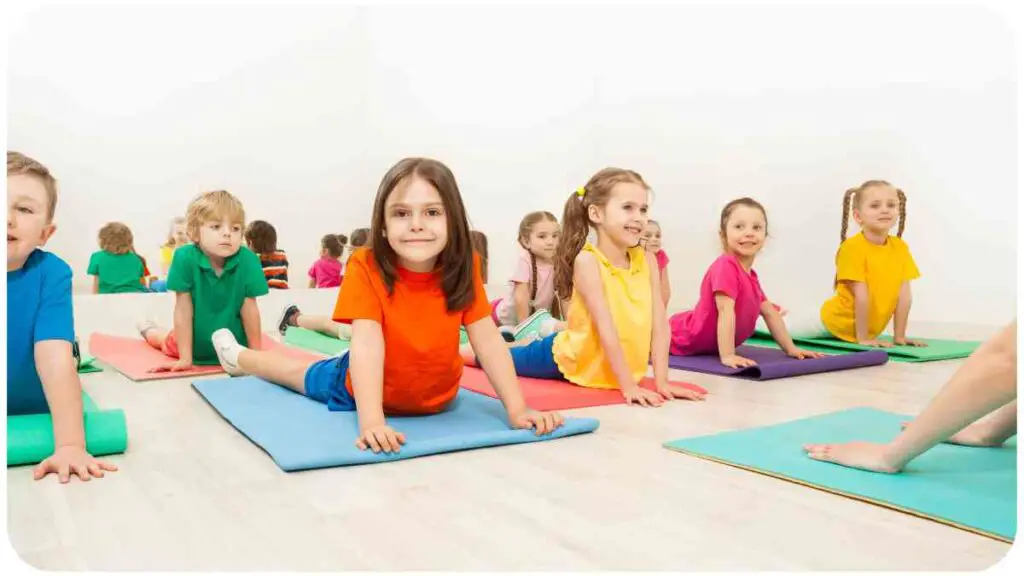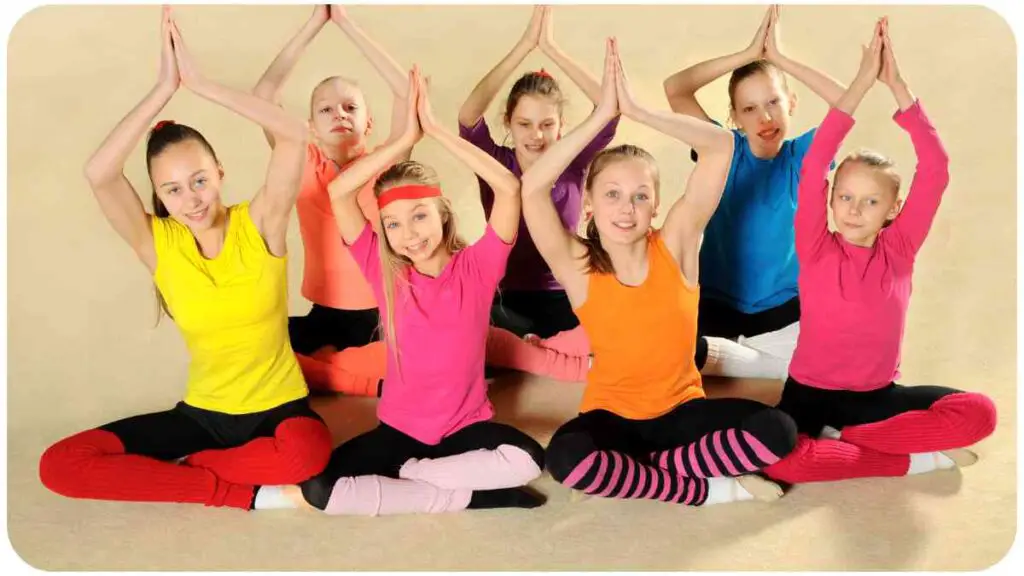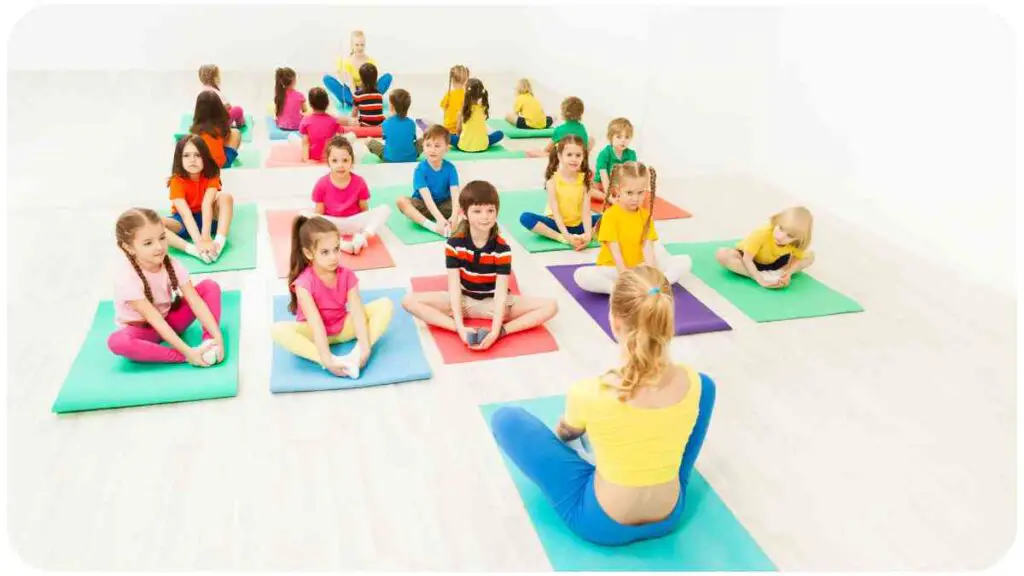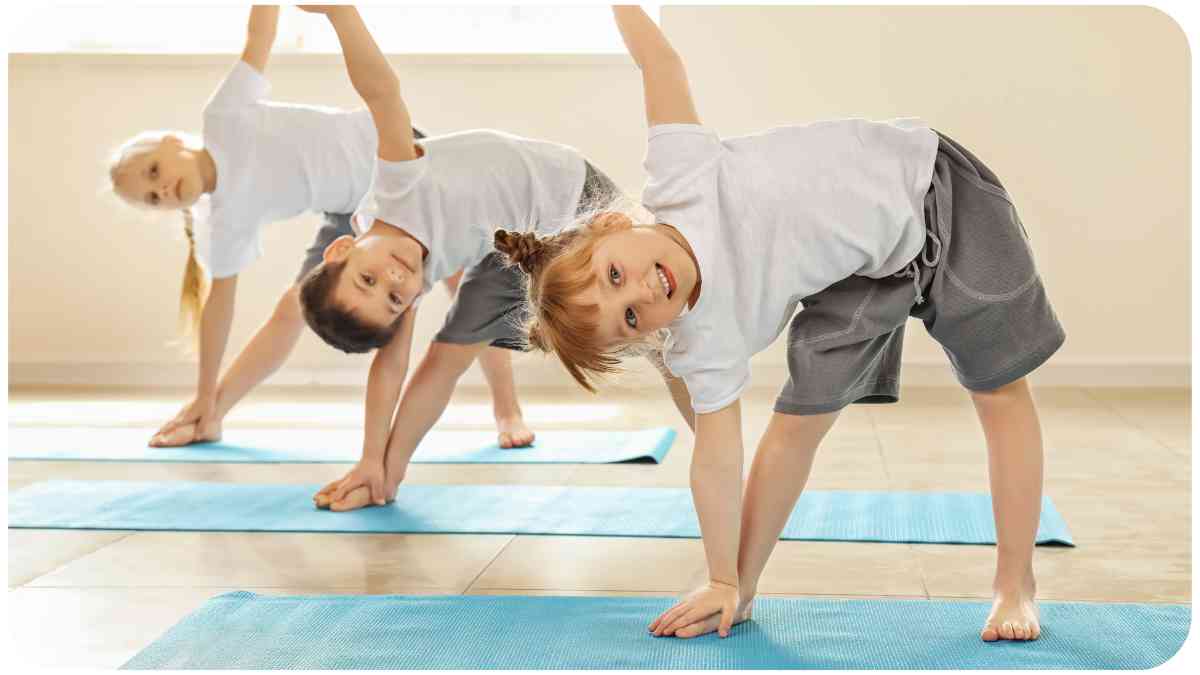In a world filled with distractions and constant stimulation, introducing children to the practice of yoga can provide a myriad of benefits. The ancient art of yoga offers not only physical exercise but also a holistic approach to mental and emotional well-being.
In this article, we’ll explore the world of beginner yoga classes designed specifically for children.
| Takeaways |
| 1. Yoga provides numerous physical and mental benefits for children. |
| 2. Choosing the right class and instructor is crucial for a positive yoga experience. |
| 3. Incorporate fun elements like games, music, and creative visualization to make yoga enjoyable for kids. |
| 4. Overcome challenges by addressing restlessness, minimizing distractions, and ensuring proper safety measures. |
| 5. Consistency and involvement of parents contribute to the success of a child’s yoga journey. |
| 6. Explore recommended resources for further learning and guidance. |
| 7. Tailor yoga sessions based on age, keeping poses and activities age-appropriate. |
| 8. Embrace the lifelong benefits of starting yoga at a young age for holistic well-being. |
2. Benefits of Yoga for Children

2.1 Physical Benefits
Engaging in yoga from a young age promotes flexibility, strength, and coordination. It also aids in the development of a strong and healthy posture, crucial for growing bodies.
Embrace the transformative benefits of yoga and mindfulness for children. Engaging in mindful practices fosters emotional balance and wellbeing, providing a solid foundation for their growth.
2.2 Mental and Emotional Benefits
Yoga is not just about physical postures; it’s a journey within. For children, this translates to improved emotional regulation, reduced stress, and enhanced self-awareness.
2.3 Improved Concentration and Focus
The practice of mindfulness in yoga can significantly boost a child’s ability to concentrate, leading to better academic performance and a more focused mind.
3. Getting Started with Beginner Yoga

3.1 Choosing the Right Class
Finding the right yoga class for your child is crucial. Look for instructors experienced in teaching children, and consider classes that incorporate elements of play and creativity.
Unlock the imaginative potential of young yogis with creative visualizations. Explore the journey to the new moon and back through guided meditation, igniting their creativity and fostering a sense of wonder.
3.2 Setting Realistic Expectations
It’s important to set realistic expectations when starting your child in yoga. Understand that every child progresses at their own pace. Some may quickly grasp the poses, while others may need more time. Celebrate small achievements and encourage a positive attitude towards the practice.
4. Basic Yoga Poses for Kids
4.1 Mountain Pose
| Pose | Instructions |
|---|---|
| Mountain Pose | Stand tall with feet together, arms by your sides. |
| Inhale, reaching arms overhead with palms facing each other. | |
| Engage core and hold the pose for 15-30 seconds. |
4.2 Downward Dog
| Pose | Instructions |
|---|---|
| Downward Dog | Start on hands and knees, lift hips towards the ceiling. |
| Straighten legs, forming an inverted V shape. | |
| Hold for 20-30 seconds, focusing on deep breaths. |
4.3 Tree Pose
| Pose | Instructions |
|---|---|
| Tree Pose | Stand on one leg, place the sole of the other foot on the inner thigh or calf. |
| Bring hands to the heart in a prayer position. | |
| Hold for 15-20 seconds, switch legs and repeat. |
4.4 Butterfly Pose
| Pose | Instructions |
|---|---|
| Butterfly Pose | Sit with the soles of feet together, knees bent outward. |
| Hold feet with hands, gently flap knees up and down. | |
| Maintain the pose for 20-30 seconds. |
5. Breathing Exercises for Kids
5.1 Bee Breath (Bhramari Pranayama)
| Exercise | Instructions |
|---|---|
| Bee Breath | Close eyes, take a deep breath, exhale making a humming sound. |
| Repeat for 5-10 breaths, focusing on the vibration. |
5.2 Balloon Breath
| Exercise | Instructions |
|---|---|
| Balloon Breath | Inhale deeply through the nose, expanding the belly like a balloon. |
| Exhale slowly through pursed lips, deflating the imaginary balloon. | |
| Repeat for 5-10 breaths, emphasizing the inflation and deflation. |
6. Making Yoga Fun for Children
Introduce kids to the joy of yoga with simple, mat-free flows at home. Discover the fun and benefits of easy, no-mat kids yoga, promoting physical activity, mindfulness, and a healthy lifestyle.

6.1 Incorporating Games
Engage children by turning yoga into a game. Incorporate storytelling, where each pose is a part of an adventure. Create yoga bingo cards or introduce yoga-themed board games to make the experience enjoyable and interactive.
6.2 Music and Yoga
Use upbeat and calming music during sessions to enhance the experience. Encourage children to move to the rhythm of the music, adding an element of creativity to their practice.
6.3 Creative Visualization
Guide children through imaginative journeys during relaxation exercises. Encourage them to visualize serene landscapes or take a mental trip to their favorite place. This not only enhances their yoga experience but also develops their creativity.
Take young minds on cosmic yoga adventures, blending movement and imagination. Explore the universe with cosmic kid yoga, enhancing creativity, focus, and a sense of connection to the vast cosmos.
7. Overcoming Challenges
7.1 Addressing Restlessness
It’s natural for children to feel restless during yoga. Break sessions into shorter intervals, incorporating dynamic movements to keep them engaged. Be patient, allowing them to explore within the boundaries of the practice.
7.2 Dealing with Distractions
Children may get easily distracted during yoga sessions. Create a dedicated and calm space for practice, minimizing external disturbances. Additionally, use props or toys as aids in certain poses to maintain their focus and interest.
8. Yoga Safety Tips for Kids
8.1 Proper Warm-Up
Before diving into poses, ensure a proper warm-up. Incorporate light stretching or a brief game to prepare their bodies for the practice ahead, preventing injuries.
8.2 Monitoring Physical Limits
Pay close attention to each child’s physical abilities. Encourage them to challenge themselves but also emphasize the importance of listening to their bodies. Adjustments can be made to poses based on individual comfort levels.
8.3 Hydration and Nutrition
Remind children to stay hydrated before, during, and after yoga sessions. Encourage healthy snacks to provide the necessary energy for an active practice.
Provide a soothing solution for restless moments with chair yoga poses. Discover the power of soothing chair yoga to help children find calmness, balance emotions, and cultivate mindfulness in a gentle, accessible way.
9. Encouraging Consistency
9.1 Establishing a Routine
Consistency is key to reaping the full benefits of yoga. Help children establish a routine by scheduling regular sessions. Consistency fosters familiarity, making it easier for them to connect with the practice.
9.2 Involving Parents and Guardians
Encourage parents and guardians to participate or at least observe the yoga sessions. This not only strengthens the bond between child and caregiver but also allows adults to understand the positive impact yoga can have on a child’s overall well-being. Share progress and insights with parents to keep them engaged in their child’s yoga journey.
10. Success Stories
10.1 Testimonials from Parents
Emily, a Parent:
“Since my child started yoga, I’ve noticed a significant improvement in their focus and emotional resilience. It’s become a cherished activity for both of us, and we often practice together. I can’t recommend it enough!”
10.2 Notable Achievements
Teacher Spotlight: Sarah Johnson
Sarah Johnson, a seasoned kids’ yoga instructor, shares her success in integrating yoga into school curriculums. She has witnessed improved behavior and enhanced learning capabilities among her students.
11. Q&A: Common Concerns and Answers
11.1 Can children start yoga at any age?
Yes, children can start yoga at a young age. However, it’s essential to choose age-appropriate poses and keep the sessions playful and engaging.
11.2 How long should a kids’ yoga session be?
For beginners, aim for 20-30 minute sessions, gradually increasing the duration as their interest and stamina grow.
11.3 Is it safe for children with certain health conditions?
Yoga can be adapted for children with various health conditions. However, it’s crucial to consult with a healthcare professional and inform the yoga instructor about any specific health concerns. A qualified instructor can modify poses accordingly to ensure a safe practice.
12. Finding the Right Yoga Instructor for Kids
12.1 Qualities to Look for
When choosing a yoga instructor for children, look for individuals who possess patience, enthusiasm, and a genuine passion for working with kids. Good communication skills and the ability to create a positive and inclusive environment are also essential.
12.2 Certification and Experience
Ensure that the instructor is certified in teaching yoga to children. Experience in both yoga instruction and child development adds an extra layer of expertise, contributing to a more enriching experience for the children.
13. Resources for Beginner Yoga
13.1 Recommended Books
- “Yoga for Kids” by Susannah Hoffman
- “The ABCs of Yoga for Kids” by Teresa Anne Power
- “Little Flower Yoga for Kids” by Jennifer Cohen Harper
13.2 Online Videos and Apps
- Cosmic Kids Yoga on YouTube
- Yoga for Kids app by Mindful Education
- The app “Super Stretch Yoga” for interactive sessions
14. Conclusion
14.1 The Lifelong Benefits of Starting Young
Introducing children to yoga not only nurtures physical health but also cultivates mental and emotional well-being. By making yoga fun, engaging, and consistent, we lay the foundation for a lifelong practice that contributes to a healthy and balanced life. Embrace the journey with your child, and watch as the benefits unfold over time.
In the next section, we’ll explore more about the impact of yoga on children’s development, backed by real-world examples and expert insights. Let’s delve deeper into the transformative power of yoga for our youngest practitioners.
Further Reading
- Action for Healthy Kids – Yoga and Mindfulness: Explore the benefits of incorporating yoga and mindfulness into children’s activities, fostering both physical and mental well-being. Action for Healthy Kids provides valuable insights and resources for parents and educators.
- Breathe and Learn: Dive into the world of Breathe and Learn, where innovative approaches to incorporating breath and mindfulness in educational settings are explored. This website offers practical tools and ideas for seamlessly integrating these practices into the daily lives of children.
- Yoga For Children: 200 Yoga Poses & Breathing Exercises: This downloadable PDF provides an extensive collection of yoga poses and breathing exercises designed specifically for children. It serves as a comprehensive guide for parents, teachers, and anyone looking to introduce yoga to kids.
FAQs
Is yoga suitable for children of all ages?
Yes, children of all ages can benefit from yoga. It’s essential to tailor the practice to the child’s age, ensuring age-appropriate poses and activities.
How long should a typical kids’ yoga session last?
For beginners, aim for 20-30 minute sessions, gradually increasing the duration as their interest and stamina grow.
Can children with health conditions participate in yoga?
Yoga can be adapted for children with various health conditions. However, it’s crucial to consult with a healthcare professional and inform the yoga instructor about any specific health concerns.
What qualities should I look for in a yoga instructor for kids?
Look for instructors with patience, enthusiasm, and a genuine passion for working with children. Good communication skills and experience in both yoga instruction and child development are essential.
Are there recommended resources for learning more about yoga for children?
Certainly! Explore books like “Yoga for Kids” by Susannah Hoffman and online platforms like Cosmic Kids Yoga on YouTube for engaging content tailored for children.

Hello, my name is Hellen James! I am a yoga teacher and writer who loves to share information about how you can achieve a more fulfilling life. I have been practicing mindfulness, yoga, and meditation for over 10 years. My passion for these practices has led me to teach them to others.

